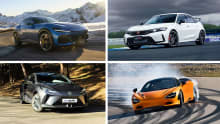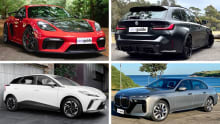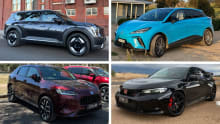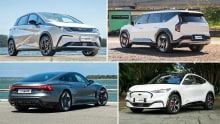
Watch out, Audi! How Lexus staged a sales comeback in 2023 off the back of updated Lexus RX, NX and UX SUVs
The cold, hard facts of the 2022 sales data were not good for Lexus. The brand...
Browse over 9,000 car reviews
.jpg)
It was meant to be the saviour of the internal combustion engine. A new type of technology that would offer not only improved fuel economy but also produce less emissions across its well-to-wheel lifecycle.
Mazda invested untold millions in Skyactiv-X, which used diesel-like compression ignition technology to cut fuel consumption by a claimed 20 per cent.
Instead, the technology has proven too expensive for Australian buyers to embrace and the Mazda3 Skyactiv-X model was quietly withdrawn from local sale in April this year. The technology remains available in the CX-30 and MX-30 models and is reportedly performing better in overseas markets, but has simply failed to have the impact Mazda was seemingly expecting.
There were two key problems for the Mazda3 Skyactiv-X model - it was the most expensive model in the range at $43,310 before on-road costs and its claimed fuel economy was only marginally better than the conventional, cheaper 2.0-litre engine; 5.5L/100km v 5.8L/100km.
Despite the apparent failure of Skyactiv-X to have the impact Mazda’s investment implied, Mazda Australia marketing director, Alastair Doak, rejects the notion that it has been an expensive flop.
“It was always the range-topping engine, so there was a cost involved, a price point and customers have said they’re happy with the standard 2.0-litre or 2.5-litre [engine],” Doak told CarsGuide.

“If you’re asking if it’s been the wrong thing to do? Absolutely not, because that was a specific engine but the actual thinking behind it, that continues on in the six-cylinder engine and the updates to the other engines.”
While Doak is adamant that “technology” and “thinking” from the Skyactiv-X program have carried over, it’s understood that the new six-cylinder engines do not use the primary technology developed at great cost for Skyactiv-X - compression ignition.
The idea of using compression ignition, which ignites the petrol and air inside the combustion chamber without a spark plug, was promoted by Mazda as the key to unlocking the fuel savings and efficiencies that would allow Skyactiv-X to be more beneficial to the environment than an electric vehicle.
“They’re not the same, but in terms of how the combustion process works it has all those fundamentals of Skyactiv-X,” Doak explains. “Mazda is still working towards making the internal combustion engine as efficient as possible as a base and adding electrification to it in that multi-solution approach that we’ve talked about.
Then, ultimately, you can move to BEV, you can move to hydrogen, you can do all those things. So that hasn’t changed, that’s still there.”
This means electrification, and not Skyactiv-X, will play a larger role in Mazda’s future strategy with more electric vehicles set to join the brand’s line-up starting in 2025, as well as a wider variety of mild and plug-in hybrids.










Comments